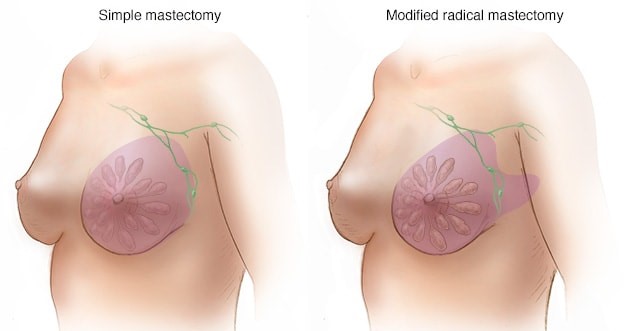A nurse is caring for a client who is 4 days postoperative following a right radical mastectomy. Which of the following activities should the nurse anticipate being the most difficult for this client to perform with her right hand?
Brushing her teeth
Buttoning her blouse
Eating her breakfast
Combing her hair
The Correct Answer is D
Choice A reason: Brushing teeth does not require much strength or range of motion in the hand, so it should not be very difficult for the client.
Choice B reason: Buttoning a blouse can be done with one hand or with the help of the other hand, so it should not be very difficult for the client.
Choice C reason: Eating breakfast can be done with the left hand or with utensils that are easy to hold, so it should not be very difficult for the client.
Choice D reason: Combing hair requires lifting the arm above the shoulder and moving the hand through the hair, which can be painful and challenging for the client who had a mastectomy and may have impaired lymphatic drainage and nerve damage in the right arm.

Nursing Test Bank
Naxlex Comprehensive Predictor Exams
Related Questions
Correct Answer is B
Explanation
Choice A reason: Danazol is a synthetic androgen that can be used to treat fibrocystic breast disease, as it can reduce estrogen levels and shrink breast tissue.
Choice B reason: Penicillin is an antibiotic that has no effect on fibrocystic breast disease, as it does not target hormonal or cellular changes in the breast.
Choice C reason: Bromocriptine is a dopamine agonist that can be used to treat fibrocystic breast disease, as it can lower prolactin levels and reduce breast tenderness.
Choice D reason: Tamoxifen is an antiestrogen that can be used to treat fibrocystic breast disease, as it can block estrogen receptors and inhibit breast cell growth.
Correct Answer is D
Explanation
Choice A reason: Brushing teeth does not require much strength or range of motion in the hand, so it should not be very difficult for the client.
Choice B reason: Buttoning a blouse can be done with one hand or with the help of the other hand, so it should not be very difficult for the client.
Choice C reason: Eating breakfast can be done with the left hand or with utensils that are easy to hold, so it should not be very difficult for the client.
Choice D reason: Combing hair requires lifting the arm above the shoulder and moving the hand through the hair, which can be painful and challenging for the client who had a mastectomy and may have impaired lymphatic drainage and nerve damage in the right arm.

Whether you are a student looking to ace your exams or a practicing nurse seeking to enhance your expertise , our nursing education contents will empower you with the confidence and competence to make a difference in the lives of patients and become a respected leader in the healthcare field.
Visit Naxlex, invest in your future and unlock endless possibilities with our unparalleled nursing education contents today
Report Wrong Answer on the Current Question
Do you disagree with the answer? If yes, what is your expected answer? Explain.
Kindly be descriptive with the issue you are facing.
